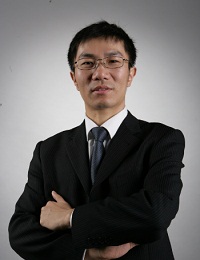 The President of Huawei’s Global Wireless Research & Development has said that the company will have a commercial 5G product – not a prototype – by 2018.
The President of Huawei’s Global Wireless Research & Development has said that the company will have a commercial 5G product – not a prototype – by 2018.
Speaking to The Mobile Network at 5G World, Ying Weimin said that the company’s $600 million programme of 5G R&D would yield fully fledged 5G technology by 2020, but added that some “aggressive” operators wanting to launch by 2018 would push some elements of the technology forward. That will mean operators in Japan and South Korea, as well as perhaps the USA, having trial systems in place for their landmark sporting events.
This would be in line, Weimin pointed out, with a recent determination from 3GPP to have 5G New Radio frozen in its specifications by mid 2018 – with some architectural elements frozen much earlier than that.
Weimin said, “In 2018 we will see a product-like solution in system trials, with a fully fledged 5G product in 2020.”
That “product-like” solution would mean a solution that conforms to an architecture that can support LTE Evolution, Weimin said, sharing the same software and hardware architecture between LTE Evolution and 5G networks.
Weimin said that the company could use F-OFDM (Filtered OFDM) as a new 5G waveform to enable it to meet diverse use cases from within a unified air interface, although he also said, “It is also possible we will use a different waveform as 5G could have more categories of waveform – it’s just a framework.” However Weimin added that “many vendors and operators think F-OFDM is very good.” The new waveform will also be critical to enabling end to end network slicing.
Other key enabling technologies for 5G will be a new core network, enabled by NFV and SDN creating network slices and a programmable network.
Some sort of distributed cloud will also be necessary- and here Weimin name-checked Mobile Edge Computing as the platform for the distribution of intelligence on top of the physical network. Weimin said although MEC is logically independent of the network, it would require physical integration of the compute resources with 5G equipment.